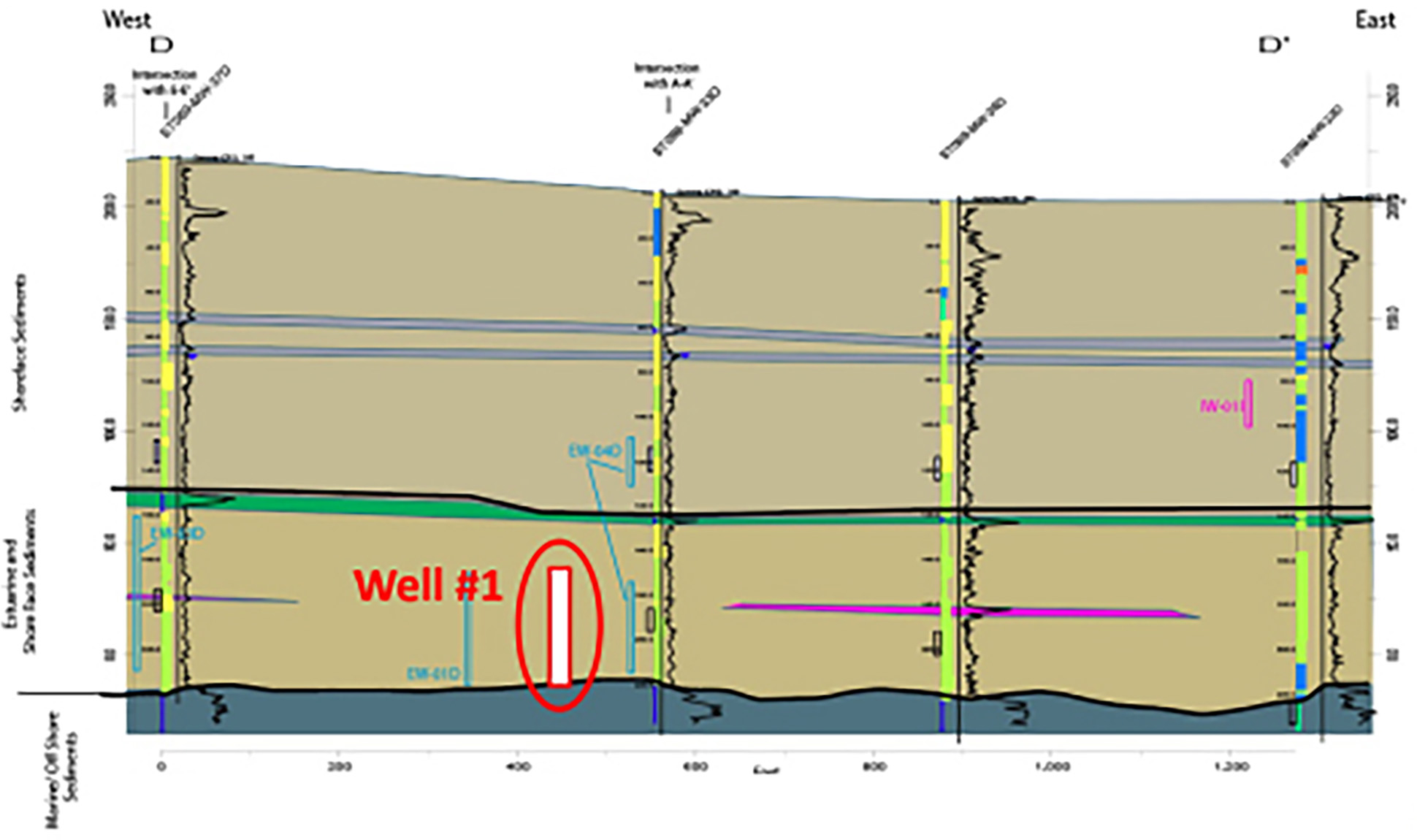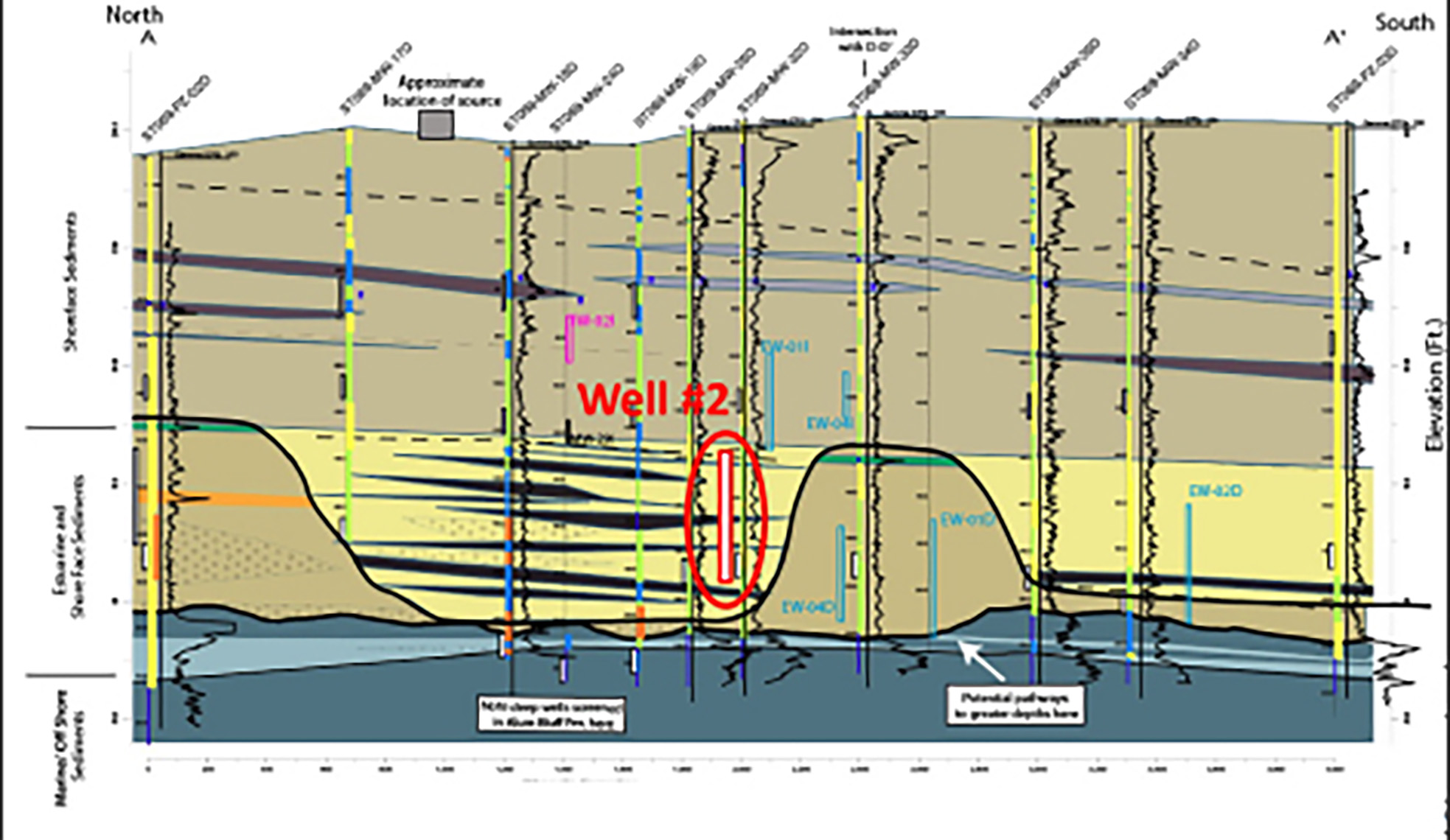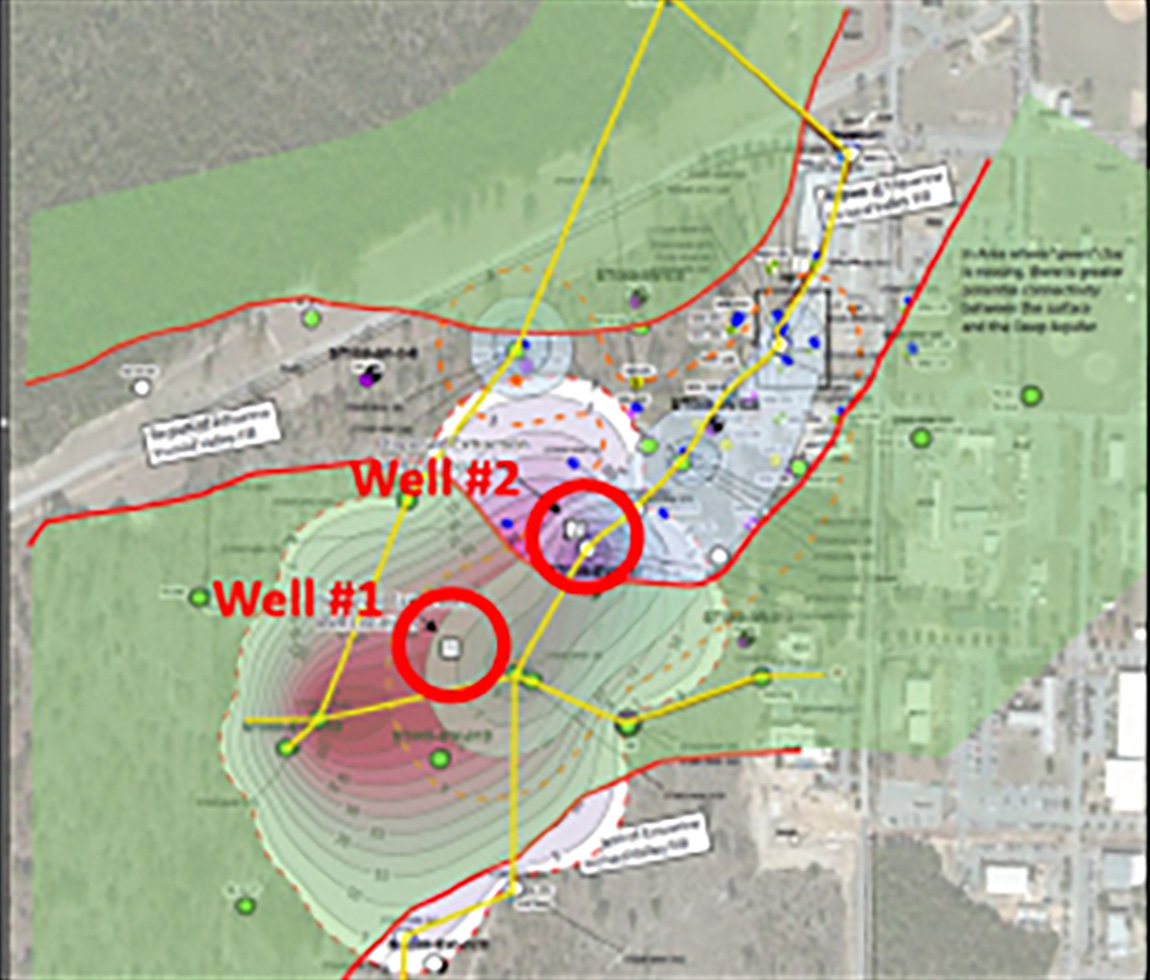Solution
Our team applied ESS, a technical approach recognized by the U.S. Environmental Protection Agency and the U.S. Air Force as a best practice in developing CSMs for complex contaminated groundwater sites. This approach focuses on the geology and understanding depositional systems that formed the subsurface to accurately define the subsurface heterogeneities and permeability architecture, which is the primary control on fluid migration and contaminant distribution and transport. Equipped with ESS enhanced CSMs, remediation professionals are able to design more effective groundwater treatment systems that achieve project goals in less time, at significantly lower cost.
Our team applied the geology-based ESS approach by examining the existing subsurface data and applying scientifically proven stratigraphic analysis. The analysis incorporated knowledge of the regional geology and depositional environment to identify and correlate genetically related lithology units (or lithofacies), resulting in a more refined understanding of the site’s stratigraphic connectivity.
Detailed geologic cross sections and maps were constructed to define the 3D hydrostratigraphic units that controlled contaminant transport and storage. The ESS framework was then used to evaluate groundwater elevation data and contaminant chemistry data to target the location of additional groundwater extraction wells and maximize the extraction of impacted groundwater and contaminant mass removal.



